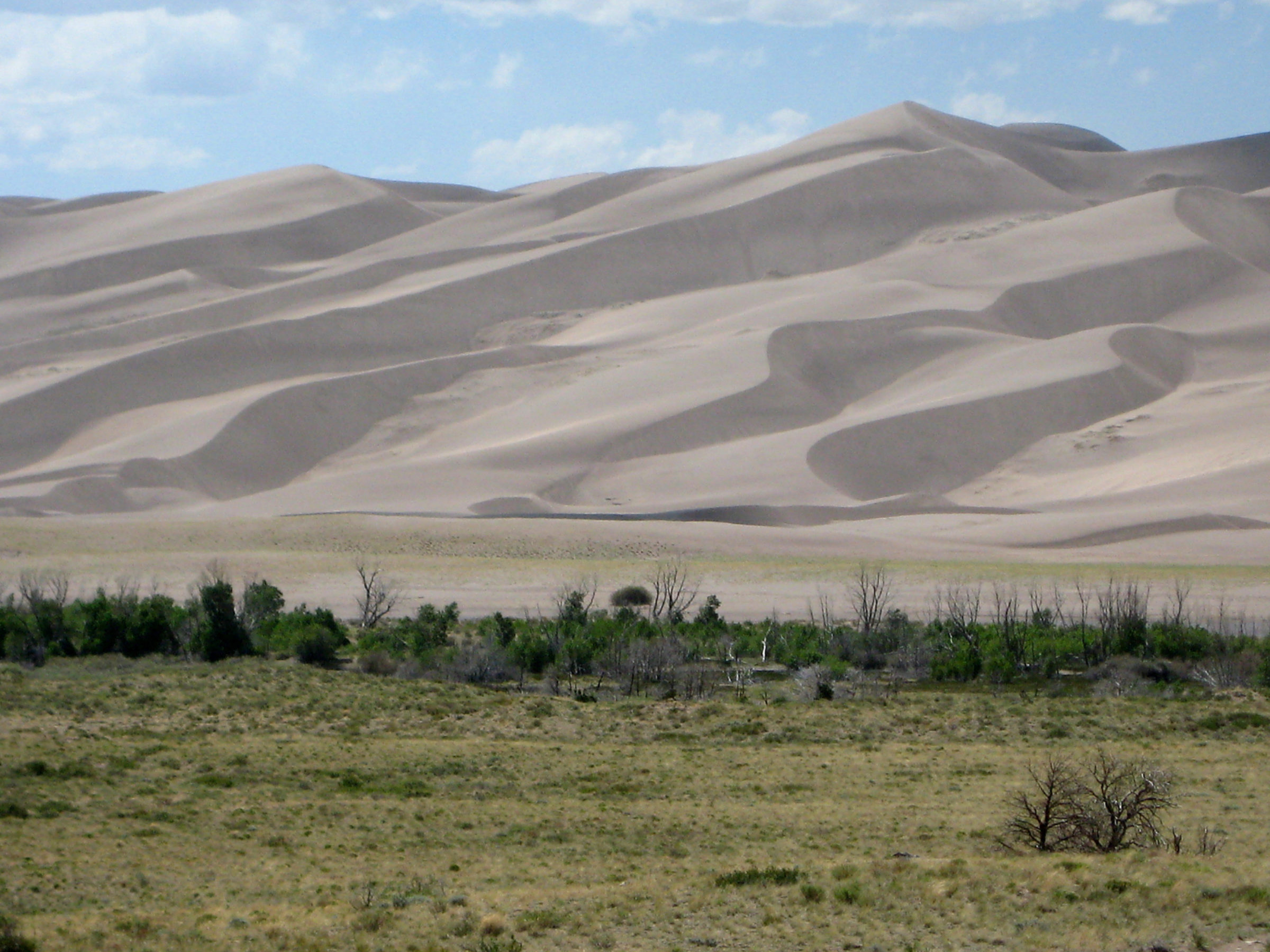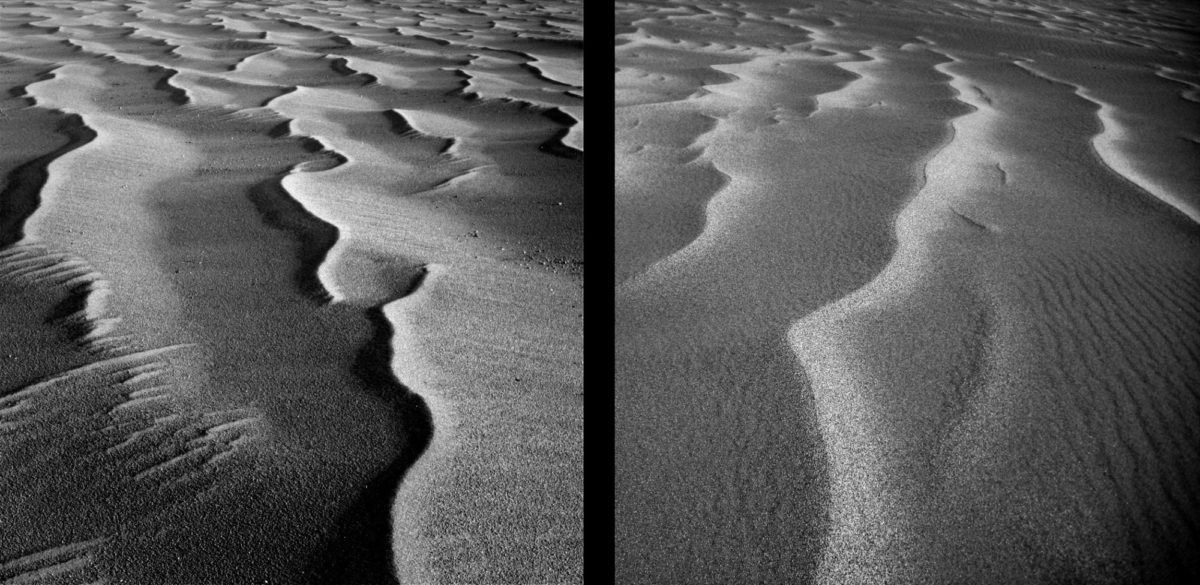Jim Bell • Jun 13, 2008
Sands on Earth, Sands on Mars
While Emily is on vacation, Jim Bell is filing occasional reports from the road. Jim is an associate professor in the Cornell University Astronomy Department and the lead scientist for the Pancam color imaging system on the Spirit and Opportunity rovers. He is also a member of The Planetary Society's Board of Directors.
One of the ways that planetary scientists try to understand the origin and evolution of landforms on other planets is by studying similar kinds of landforms or "analogs" here on the Earth. For the past few days I've been working with a group of colleagues doing just that--specifically, studying the shapes and behavior of a variety of sand dunes in the Great Sand Dunes National Park and Preserve near Alamosa, Colorado, in order to try to better understand the nature of sand dunes on Mars.
One of my shortcomings as a planetary scientist is that I do not have a lot of real-world field geology experience. This makes it challenging for me to interpret landforms that I see in orbital, lander, or rover images from Mars and other planets, because I don't have enough experience as I should to place the photos into a broader geologic context. For the past few years I've been trying to get more of that experience. A few months ago, one of my Mars research colleagues, Dr. Jim Zimbelman from the Center for Earth and Planetary Studies (CEPS) at the Smithsonian Museum's National Air and Space Museum, offered to let me tag along when he and his colleague, Dr. Steve Williams (also from CEPS) went to Great Sand Dunes Park for some field work. I jumped at the chance, and Jim and Steve were gracious enough to let me take along three of my graduate students from Cornell so that they could get some much-needed field experience as well. One of them is, in fact, studying sand dunes near the north pole of Mars as part of her thesis research.
Great Sand Dunes Park is a phenomenal place. Sand eroded from nearby mountains and by the Rio Grande and other rivers is trapped there within a closed basin. For thousands of years, steady winds from the southwest have blown the sands towards the northeast edge of the basin, where it simply piles up because it can't escape the high surrounding peaks. The result is the largest single accumulation of sand dunes in North America--a gargantuan pile of crescent-shaped sandy ridges that rises nearly 700 feet above the surrounding basin floor (see image below). Jim and Steve are studying some of the different kinds of dunes in the park--barchan dunes, transverse dunes, reversing dunes, and granular ripples, to name a few. (To see more pictures and learn more about these spectacular dunes, check out my student Ryan Anderson's blog.

Dunes are typically very large structures composed of the same-sized grains of sand (on Earth, usually quartz-rich, and typically around 0.5 to 1.0 mm in size). They typically have a gentle slope on the windward side (called the "stoss" slope) and a steep slope on the lee side (called the "slip face"). Dunes move by sand grains "saltating"--colliding with each other and "hopping" forward when driven by the wind--moving up the stoss slope and causing small avalanches on the slip face that slowly march the dune downwind. Dunes have been seen on Mars since the Viking Orbiter days, and they share many similarities with dunes on Earth. Thus studying the shapes of dunes on Mars can provide clues about the way the Martian climate operates at present and in the past.
Great Sand Dunes Park has another class of wind-formed features that are also seen on Mars: ripples. Wind ripples are typically much smaller than dunes, and they typically have less steep slopes. Ripples often consist of two populations of sand sizes, coarse sand and fine sand, and they usually move not by saltation but by much slower "surface creep"--that is, by collisions which merely nudge particles along rather than causing them to hop ballistically. Ripples are widespread on Mars and, as at Great Sand Dunes Park, they often occur in association with their larger wind-formed cousins, the dunes. I was struck in several places by the amazing similarity in form of some of the ripples in Great Sand Dunes Park and some of the ripples on Mars.

Jim and Steve are making detailed GPS measurements of the shapes and movements of the dunes at Great Sand Dunes Park in order to try to quantitatively model the movement of the dunes and to link their characteristics to the characteristics of the dunes seen on Mars. The value of this experience for me and my students at this point is much more qualitative: By hiking among them, watching them move, and getting our skin blasted by their rapidly saltating grains, we're gaining a familiarity and a geologist's "feel" for the way these landforms develop and evolve, both on Earth and on Mars.
Let’s Go Beyond The Horizon
Every success in space exploration is the result of the community of space enthusiasts, like you, who believe it is important. You can help usher in the next great era of space exploration with your gift today.
Donate Today

 Explore Worlds
Explore Worlds Find Life
Find Life Defend Earth
Defend Earth

